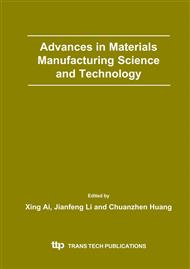p.178
p.183
p.187
p.192
p.196
p.201
p.206
p.211
p.216
Tool Condition Monitoring Based on an Adaptive Neurofuzzy Architecture
Abstract:
Metal cutting operations constitute a large percentage of the manufacturing activity. One of the most important objectives of metal cutting research is to develop techniques that enable optimal utilization of machine tools, improved production efficiency, high machining accuracy and reduced machine downtime and tooling costs. Machining process condition monitoring is certainly the important monitoring requirement of unintended machining operations. A multi-purpose intelligent tool condition monitoring technique for metal cutting process will be introduced in this paper. The knowledge based intelligent pattern recognition algorithm is mainly composed of a fuzzy feature filter and algebraic neurofuzzy networks. It can carry out the fusion of multi-sensor information to enable the proposed intelligent architecture to recognize the tool condition successfully.
Info:
Periodical:
Pages:
196-200
Citation:
Online since:
December 2004
Keywords:
Price:
Сopyright:
© 2004 Trans Tech Publications Ltd. All Rights Reserved
Share:
Citation:


